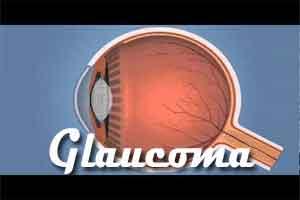- Home
- Editorial
- News
- Practice Guidelines
- Anesthesiology Guidelines
- Cancer Guidelines
- Cardiac Sciences Guidelines
- Critical Care Guidelines
- Dentistry Guidelines
- Dermatology Guidelines
- Diabetes and Endo Guidelines
- Diagnostics Guidelines
- ENT Guidelines
- Featured Practice Guidelines
- Gastroenterology Guidelines
- Geriatrics Guidelines
- Medicine Guidelines
- Nephrology Guidelines
- Neurosciences Guidelines
- Obs and Gynae Guidelines
- Ophthalmology Guidelines
- Orthopaedics Guidelines
- Paediatrics Guidelines
- Psychiatry Guidelines
- Pulmonology Guidelines
- Radiology Guidelines
- Surgery Guidelines
- Urology Guidelines
Bimatoprost and latanoprostene found best for open-angle glaucoma treatment: Study

Bimatoprost 0.03% (Vistitan) followed by latanoprostene bunod showed the highest efficacy for the treatment of open-angle glaucoma and ocular hypertension as compared to other prostaglandin analogues (PGA) therapies, according to a recent study.
In the research, presented at the American Academy of Ophthalmology (AAO) 2019 Annual Meeting, held October 12-15, 2019 in San Francisco, California, bimatoprost 0.03% and latanoprostene showed greater reduction in intraocular pressure (IOP) after 3 months. The study concluded that bimatoprost 0.03% is the most successful in decreasing intraocular pressure and therefore reducing glaucoma risk.
Paul Harasymowycz, and colleagues assessed the comparative efficacy of latanoprostene bunod to other treatments for intraocular pressure reduction at three months.
“In treating a disease where every millimetre of ocular pressure control is important, the data continues to support the use of Vistitan over the competition due to its effective bimatoprost 0.03% formulation,” said Ian Ball, CCO of Aequus in a press release. “This study adds to a growing body of evidence that Vistitan, the only bimatoprost 0.03% formulation currently marketed in Canada, is the most effective product available for treating glaucoma and is the cornerstone of our rapidly expanding ophthalmology franchise in Canada.”
They searched for various databases and identified 104 studies involving 18,407 patients. The treatments were ranked by the surface under the cumulative ranking rate (SUCRA).
Key findings include:
- Latanoprostene bunod was significantly more effective than apraclonidine, brimonidine, betaxolol, timolol, brinzolamide and dorzolamide.
- Numerically, compared with other PGAs, latanoprostene bunod demonstrated the greatest efficacy except when compared with bimatoprost 0.03%.
- Among all treatments included in the analysis, bimatoprost 0.03% ranked the highest (SUCRA 94%), followed by latanoprostene bunod (88%), then bimatoprost 0.01% (83%).
About Vistitan
Bimatoprost 0.03% is a prostaglandin approved for the reduction of elevated IOP in patients with open-angle glaucoma or ocular hypertension. Vistitan is currently the only marketed version of 0.03% bimatoprost ophthalmic solution for this indication in Canada and demonstrates the best ratio of safety to efficacy for this strength of the molecule.
About Latanoprostene bunod
Latanoprostene bunod (Vyzulta) is a once-daily ophthalmic solution currently approved for the treatment of open-angle glaucoma and ocular hypertension. It is the first PGA to have nitric oxide as one of its metabolites. It exerts a dual mechanism of action through latanoprost acid, which works within the uveoscleral pathway to increase aqueous humour outflow, and through butanediol mononitrate, which releases nitric oxide to increase outflow through the trabecular meshwork and Schlemm’s canal.
For further reference-
Harasymowycz PJ, Royer C, Jobin Gervais K, et al. Effectiveness of latanoprostene bunod in treating OAG and OHT: network meta-analysis. Presented at: The American Academy of Ophthalmology (AAO) 2019 Annual Meeting; October 12-15, 2019; San Francisco, California. Abstract PO176.

Disclaimer: This site is primarily intended for healthcare professionals. Any content/information on this website does not replace the advice of medical and/or health professionals and should not be construed as medical/diagnostic advice/endorsement or prescription. Use of this site is subject to our terms of use, privacy policy, advertisement policy. © 2020 Minerva Medical Treatment Pvt Ltd